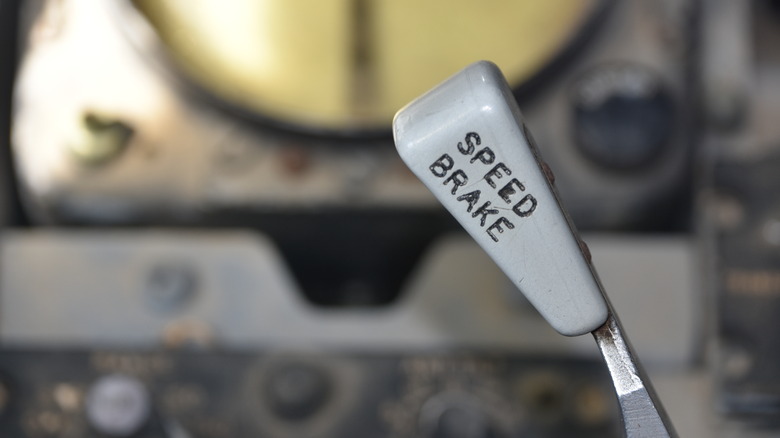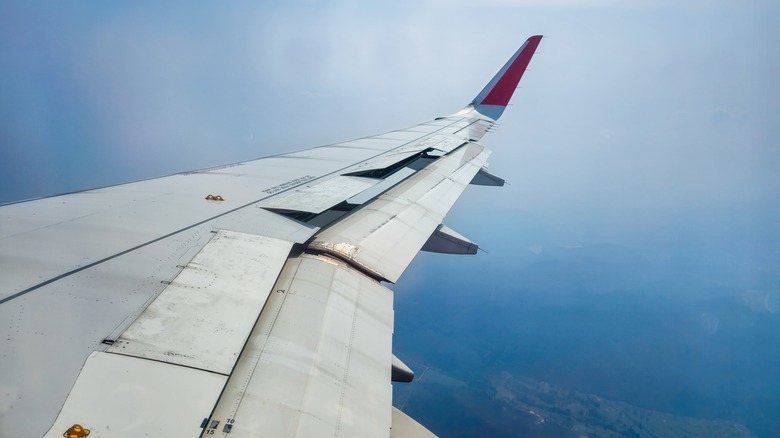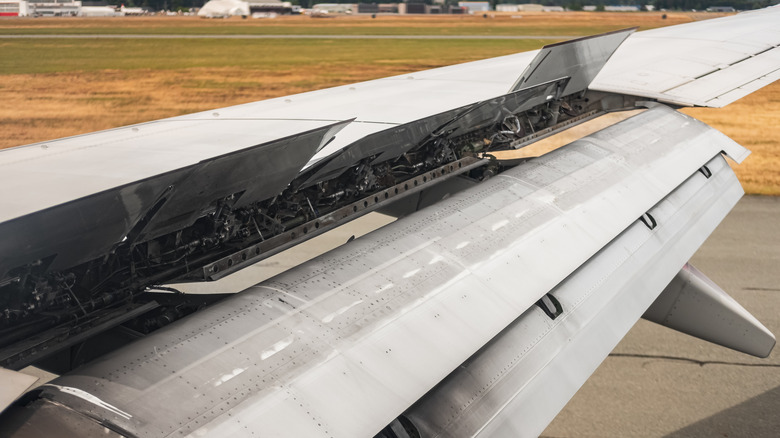How Do Airplane Speed Brakes Work And How Do They Differ From Spoilers?
Speed brakes are high-drag devices designed to help aircraft descend faster without gaining excess speed. They're especially useful when a pilot needs to increase the descent rate without shocking the engine by suddenly cutting power, a practice known to cause engine wear. Speed brakes are often deployed during descent or landing when controllers issue a slam-dunk directive: Get down fast, but don't overspeed.
Unlike spoilers and winglets (curved tips on aircraft wings), speed brakes are used purely to add drag. They don't directly interfere with lift. In general aviation aircraft like the Mooney, speed brakes pop up from the wings to disrupt airflow and slow the plane. They're electrically controlled and don't affect the plane's handling at lower speeds, which makes them a flexible tool for descent planning and airspeed control.
Jets and turboprops also use speed brakes, sometimes called the boards, to manage glideslope and maintain control at high descent rates. Turbine aircraft are especially clean aerodynamically, and even with engines at idle, they can easily accelerate in a dive. Speed brakes solve that by doubling parasitic drag and letting pilots maintain safe descent speeds.
While the drag helps with descent management, speed brakes also prevent excessive cooling in piston aircraft, preserving engine health. Importantly, they don't disrupt flight balance and can be used right up to redline airspeeds.
Spoilers: multi-function surfaces that disrupt lift
Spoilers are different from both rear wings and speed brakes, even in the world of airplanes. They're mounted on the upper wing surface and serve multiple functions: speed control, lift reduction, and roll control. When extended, spoilers disrupt airflow over the wing, decreasing lift and increasing drag. That combination makes them useful in different phases of flight.
Aircraft typically use spoilers in three main modes. First, as flight spoilers, they act similarly to traditional speed brakes by increasing drag during descent. Second, as ground spoilers, they activate on landing to kill lift, helping the wheels grip the runway better for braking. Third, roll spoilers assist ailerons in banking the aircraft, deflecting asymmetrically to help the plane turn faster and with more authority.
Most modern airliners and business jets use spoiler panels for all three purposes, often with built-in protections. For example, spoilers might retract automatically at low speeds, high flap settings, or if the pilot increases thrust, to prevent unintentional lift loss. In Airbus aircraft like the discontinued A380, spoilers are even controlled by flight computers that manage extensions based on conditions like gear contact during landing.
Key differences: drag vs. lift disruption
Speed brakes and spoilers might seem similar, as they both slow down aircraft, but their function and placement tell a different story. Speed brakes are drag-only tools. They don't affect lift, so they're safer to use throughout more phases of flight, especially in general aviation. They're often fuselage-mounted or pop out of the wing without affecting the wing's upper surface.
Spoilers, on the other hand, directly interfere with lift. That makes them useful on landing, during roll, and when slowing down, but it also means pilots need to be more cautious with their deployment.
Spoilers are more integrated into the flight control system, and often computer-controlled on modern jets. Speed brakes are simpler, usually pilot-controlled and can be deployed at any time. Spoilers require protections to prevent asymmetry or uncommanded deployment, especially in fly-by-wire aircraft.
Finally, speed brakes don't require differential actuation: They either pop up or don't. Spoilers can act differentially as roll spoilers, adding a layer of redundancy and performance to aileron control. If you're flying an airliner, you're probably working with spoilers. If you're in a Mooney, you've got speed brakes. Each does its job well, but they're built for different goals.


